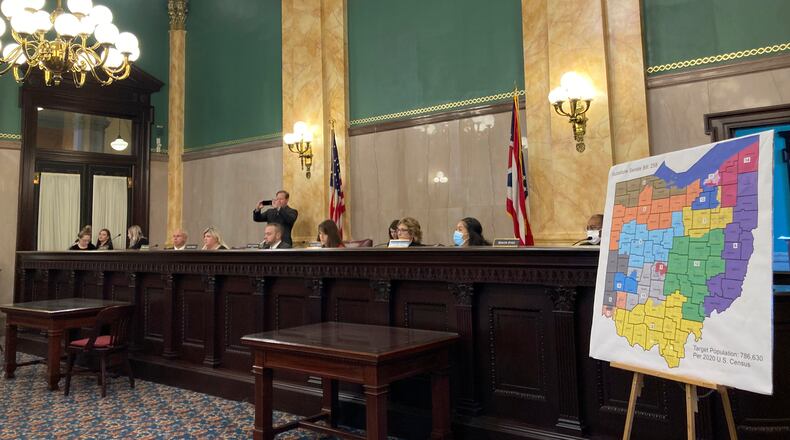Plaintiffs argue that the map, and process of creating it, do not meet the standards of the 2018 state constitutional amendment that established Ohio’s current redistricting process. The League of Women Voters case says the map unduly favors Republicans, creating 11 safe Republican seats, two Democratic seats and two competitive districts.
The Adams case says legislators selectively chose their basic data to make districts look more competitive. Republicans hold a supermajority in both houses of the General Assembly, and passed the map by a simple majority vote. Since that was done without any Democratic support, the map must be redrawn in four years. To last for a decade, a map would have to get a three-fifths overall majority and support from one-third of Democrats.
DeWine and several others originally named have been dismissed from the cases, but the Republican leaders of the state House and Senate remain parties along with Secretary of State Frank LaRose. LaRose has asked for speedy resolution due to the upcoming May 3 primary for 2022 congressional elections.
Legislators approved the new congressional map Nov. 17, and DeWine signed the bill three days later. The lawsuits were filed by the end of that month.
The map, passed as substitute Senate Bill 258, was sponsored by Sen. Rob McColley, R-Napoleon.
Republicans contend that the map is more competitive than previous ones, with six seats leaning Republican, seven competitive seats and two leaning toward Democrats.
Following the map’s approval, House Speaker Bob Cupp, R-Lima, released a statement that the map was constitutional and not gerrymandered.
Democrats argued that the map is gerrymandered to increase Republican dominance by splitting urban and minority communities, such as the three-way split of Hamilton County.
Ohio’s 16 current House seats are occupied by 12 Republicans and four Democrats. Due to results of the 2020 census, Ohio must lose one House seat.
The map as now drawn keeps Montgomery and Greene counties together and adds a chunk of Clark County, putting Wright-Patterson Air Force Base and the Springfield Air National Guard base in the same district.
U.S. Rep. Mike Turner, R-Dayton, now represents the area that includes Wright-Patt, which is Ohio’s largest single-site employer with nearly 30,000 workers.
There are five redistricting cases before the Ohio Supreme Court, according to the court’s docket. The other three challenge the state legislative district maps that the Ohio Redistricting Commission approved on a party-line vote in September.
The court heard oral arguments on the state legislative map cases earlier in December, but has not rendered a decision on any of them.
How to watch
Oral arguments will be livestreamed at www.sc.ohio.gov and on the Ohio Channel starting at 9 a.m.
About the Author

